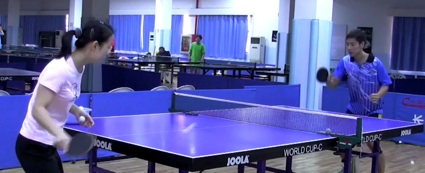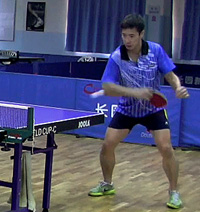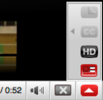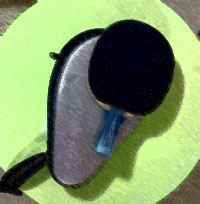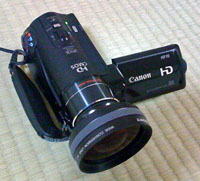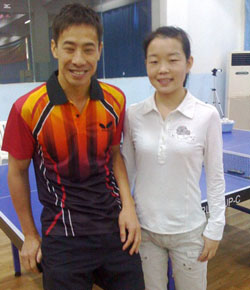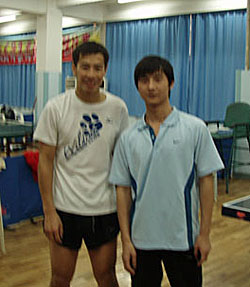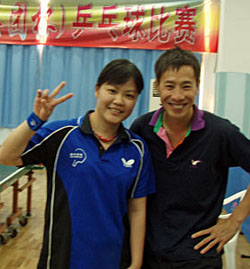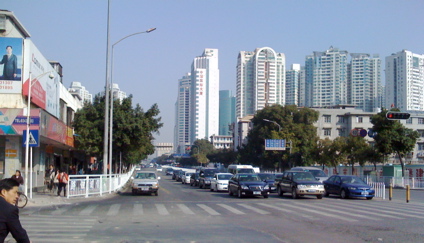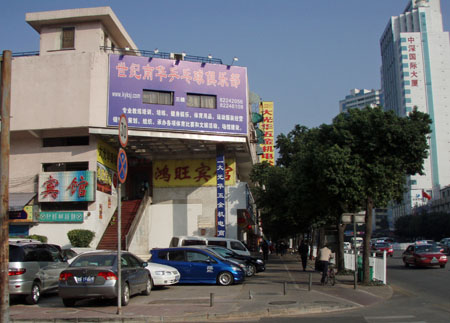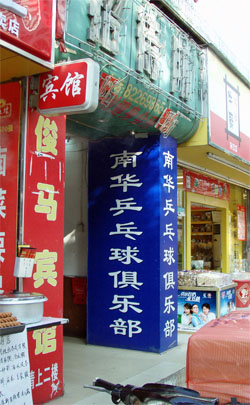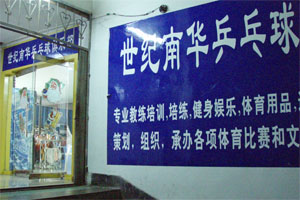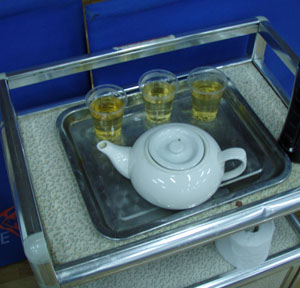I've been away from ping pong for a long time.
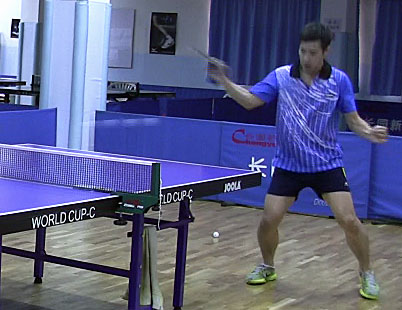 [Reverse side backhand penhold loop.]
[Reverse side backhand penhold loop.]
This hopefully marks the first (of a series) of blog entries on the topic. Let's begin with some history...
Just to illustrate how long ago it has been, last time I played on a regular basis the official ball size was still 38mm and games were to a lengthy 21 points.
The current 40mm ball was approved back in Y2K. And the change to 11 points happened after that. Since then, rules on serves and speed glue have also come into effect.
As someone who got into ultra distance cycling, marathon running, scuba diving, skiing and swimming, you might think I'd moved on. But recently, several events conspired to bring me back to ping pong, which (for me) predated all those other sports.
First, I was fortunate enough to spend a semester doing research at MIT in the first half of 2008, away from my normal duties at the University of Arizona.
That meant I reconnected with Liang Kok Liung (Vincent) who is now a full-time table tennis coach.
Back in the late eighties when I was a graduate student I learned to play at the MIT Table Tennis Club. Vincent, a player of Chinese descent, who became practice partner for the Indonesian National Team and later came to Boston to study at Northeastern University, was a regular at the club and taught me the basic strokes and the game. Began as a (short) pips out penholder. I went from a basic beginner to my first tournament and rating (1129) to a rating of 1900-something by the time I graduated.
Then I moved to the Princeton area and joined the New Jersey Table Tennis Club (NJTTC) up in Westfield. A fair distance away but I was a regular at this full-time club (
link): gaining quite a bit of experience from the 20-odd players from around the 2000-level or higher, participating in Thursday night league, small tournaments hosted there. Even got some formal coaching from Lily Yip (then a regular US team member) in an attempt to make progress. (There's an old picture of me getting ready for a forehand loop on Lily's website
here.)
I stayed a penholder but switched to smooth rubber. I ended up terminally hovering in the 2100s, never quite making 2200. Then for a variety of reasons I quit playing in the late nineties.
As I mentioned earlier, last year I got reconnected with Vincent, who became a full-time coach at the Boston Table Tennis Center (
link). I was extremely rusty but the game had substantially changed anyway.
Vincent got me interested in updating my game by developing a penhold reverse side backhand loop from scratch, a stroke that didn't really exist in my day. In contemporary terms, you could say I got interested in Penhold 2.0.
The reverse side penhold loop brings the possibility of a two-winged loop attack game previously only available to the shakehands player. And for me, the chance to progress again. If you're still with me, let me briefly explain.
Normally, a player using a penhold grip uses the same side of the paddle for both forehand and backhand strokes. In fact, many penholders don't utilize the reverse side at all. (Like many penhold players up to my era, I ran around like a headless chicken looping on the forehand and merely blocked on the backhand.)
The newer style substitutes a backhand loop using the reverse side of the paddle. As a result you need to put smooth rubber on both sides, the paddle is considerably heavier but on the plus side it adds versatility because it's harder for someone to pin you on the backhand side (i.e. make you block and play defensively) and you don't need as good footwork (since you're not always trying to run around and use your forehand only).
There are lots of ping pong videos on YouTube if you search by name. For example, China's Wang Hao (王皓) is a brilliant player using this style (
picture link). You could contrast his style with South Korea's Ryu Seung Min (柳承敏), who only loops with his forehand
picture link.
Anyway, that's why I ended up doing
Winter Table Tennis Training in Shenzhen hosted by Vincent. I spent January 2009 at the Shenzhen Century South China Table Tennis Club (深圳市世纪南华乒乓球俱乐部), (website
here,
update:
the nanhua club still exists but the website seems gone) in an attempt to regain the ability to play some table tennis and add the reverse penhold backhand loop to my game.
More to come...




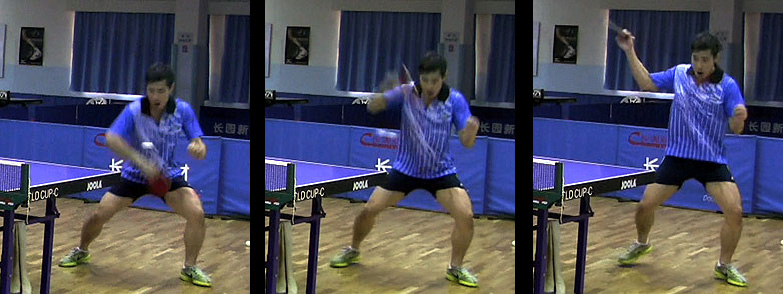
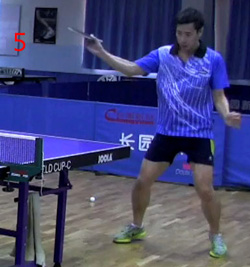
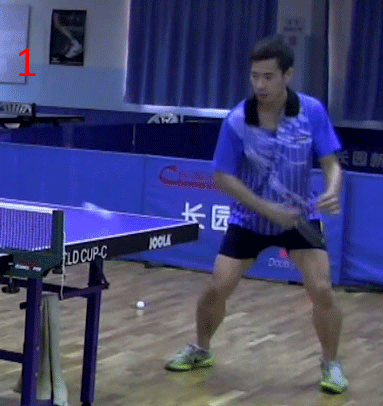 (The numbered animated gif is taken from the second clip at the end of this blog entry.)
(The numbered animated gif is taken from the second clip at the end of this blog entry.)
